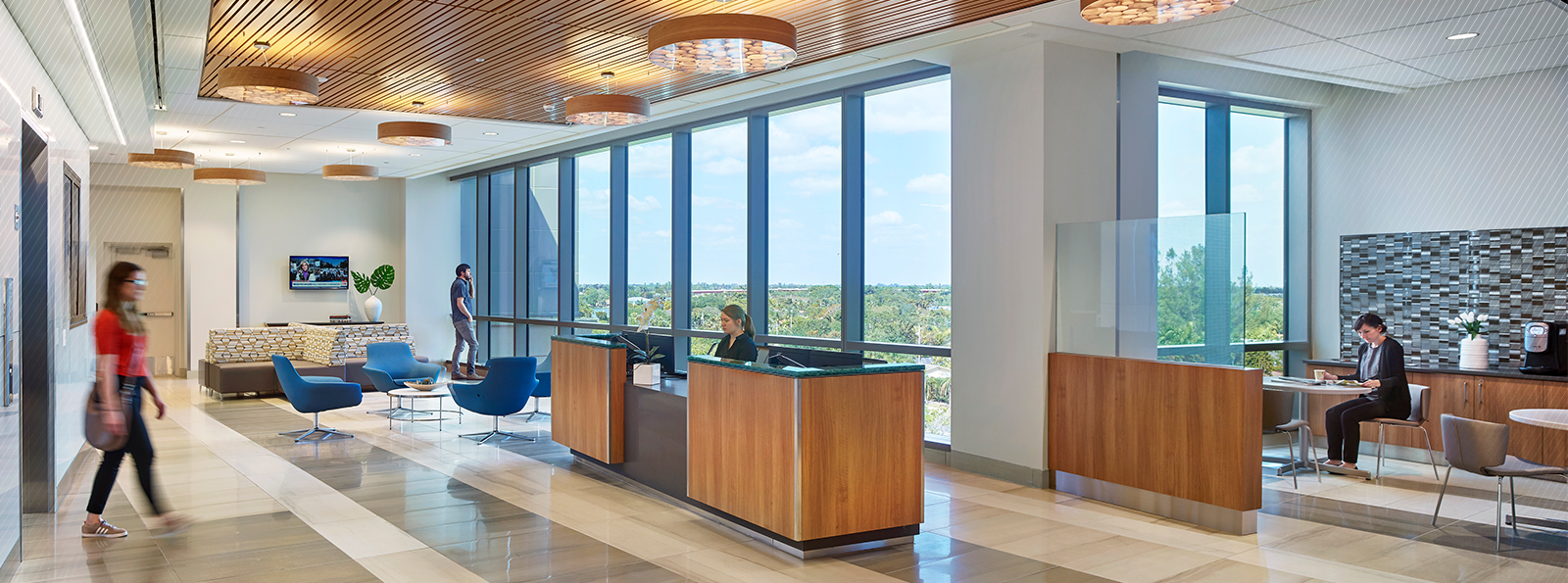The ambulatory care revolution has made healthcare providers around the country acutely aware of the value of their real estate footprint. Every square foot counts. Every staff member provides value.
Efficiency and flexibility are two buzzwords often cited as key factors in the design and planning of medical office buildings and ambulatory surgery centers, but tactical implementation strategies to address these factors in the physical environment is not universally understood.
Flexibility can manifest in efficient clinic layouts, where it is easy to switch a room's use for different service lines while maximizing occupancy configurations of a space. Efficiency can be realized by providing physician offices modeled on a hoteling scenario. Space utilization can be optimized by introducing kiosk registration and centralized diagnostic testing, located to promote convenient access – and as close as possible to related specialty services. Within the clinic environment, talk spaces can bring physicians, caregivers and patients together in a space that is more conducive for the patient to “own” their care plan. By providing spaces without exam tables, care can also be more effectively coordinated across the continuum of care with inclusion of nutritionists, social workers, rehab providers, etc.
In this second installment of our Ambulatory Care video series, we endeavor to address these key facility-planning factors of flexibility and efficiency. The video below introduces several Array thought leaders—from planning, design and project management—who share their expertise on the future of ambulatory care and how facility flexibility plays a key role in the success of ambulatory care delivery for healthcare provider organizations throughout the nation.
This blog written by Adrian Hagerty, formerly Array's Chief Operating Officer.

